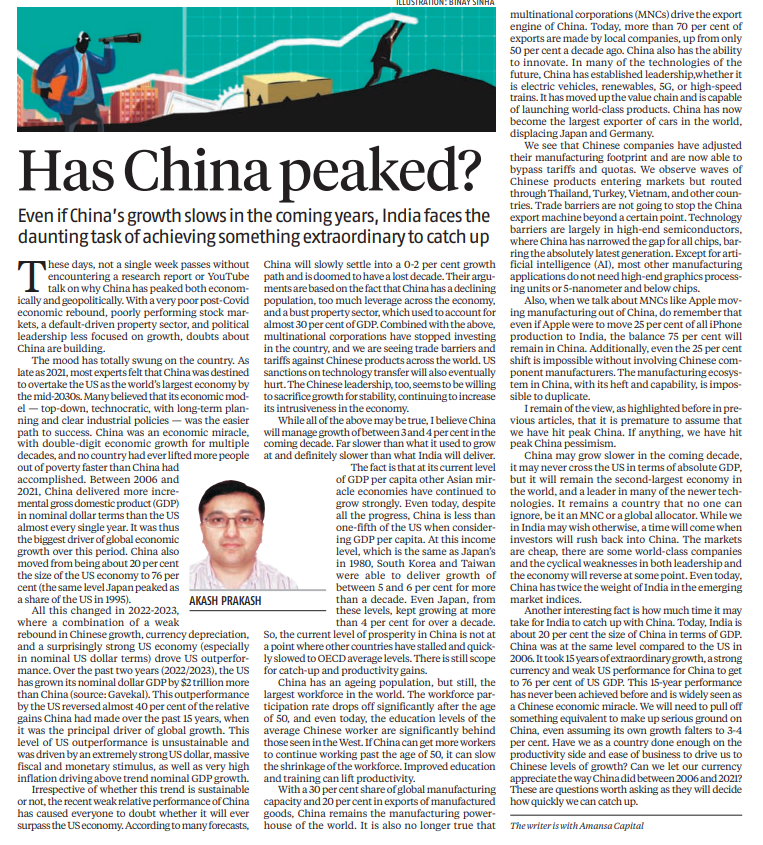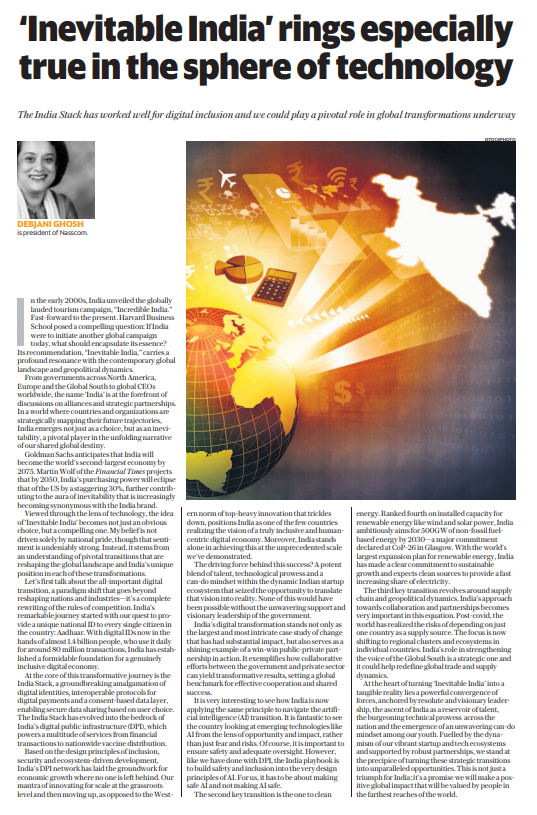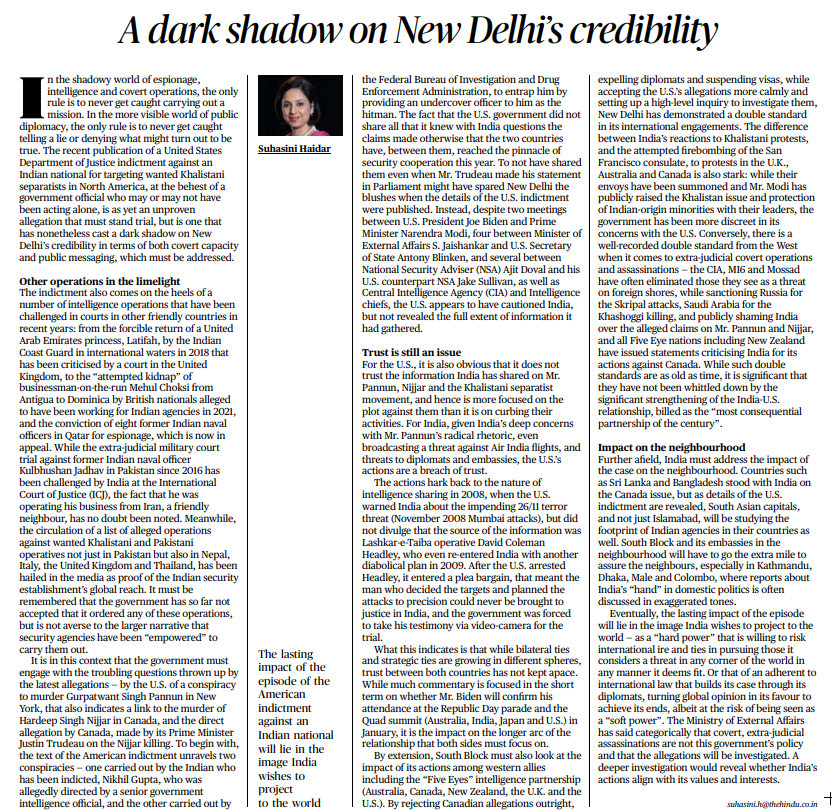Understanding China's Economic and Geopolitical Landscape
Introduction
The prevailing narrative on China’s economic and geopolitical standing has shifted dramatically in recent times, marked by poor post-Covid economic recovery, stock market struggles, a distressed property sector, and a perceived lack of growth-oriented political leadership.
Historical Perspective (Up to 2021)
- As of 2021, experts anticipated China surpassing the US as the world’s largest economy by the mid-2030s.
- China’s economic success was characterized by double-digit growth, lifting millions out of poverty, and contributing significantly to global economic growth. However, this narrative changed in 2022-2023.
Recent Trends and Challenges (2022-2023)
- Factors such as a weak rebound in Chinese growth, currency depreciation, and a robust US economy have led to a shift in economic performance.
- Over the last two years, the US has outperformed China, reversing a substantial portion of China’s relative gains over the past 15 years.
- Concerns arise over the sustainability of this trend, driven by a strong US dollar, extensive fiscal and monetary stimulus, and high inflation.
Challenges Faced by China
- Doubts about China’s economic future are fueled by a declining population, excessive leverage, a troubled property sector, reduced foreign investment, and escalating trade barriers.
- Forecasts suggest a potential lost decade for China, projecting slow growth in the range of 0-2 percent.
Optimistic View on China’s Future Growth
- Contrary to prevailing pessimism, the author argues that China can manage a growth rate between 3-4 percent in the coming decade.
- Comparisons with other Asian economies at similar income levels indicate room for catch-up and productivity gains.
- China’s large workforce, global manufacturing dominance, and innovation capabilities, especially in future technologies, are highlighted as key strengths.
China’s Manufacturing Powerhouse Status
- China retains a 30 percent share of global manufacturing capacity and 20 percent in exports of manufactured goods.
- The transition from multinational corporations (MNCs) driving exports to local companies contributing more than 70 percent underscores China’s resilience.
- The ability to innovate, particularly in emerging technologies, positions China as a global leader.
Mitigating Trade Barriers and Technology Challenges
- Despite trade barriers and technology challenges, China adapts its manufacturing footprint by routing products through other countries.
- High-end semiconductor production remains a hurdle, but China’s prowess in various manufacturing applications, excluding the latest AI-related technologies, persists.
Addressing Demographic Challenges
- With an aging population, China faces challenges in workforce participation.
- However, improvements in education, training, and encouraging longer working lives can mitigate these issues and boost productivity.
Future Outlook and Comparisons
- While acknowledging China’s slower growth, the author remains optimistic about its future.
- China may not surpass the US in absolute GDP but is expected to remain the second-largest economy and a leader in emerging technologies.
- The time and effort it took for China to reach its current status compared to India’s present position raise questions about India’s potential for rapid growth and catching up.
Conclusion
The editorial concludes that prematurely declaring “peak China” is unwarranted. Despite potential challenges, China’s economic significance, technological leadership, and global market influence are likely to persist.
The author anticipates a return of investor interest in China, citing its undervalued markets, world-class companies, and the eventual reversal of cyclical weaknesses.
"Inevitable India: A Global Force in Transition"
Introduction:
In the early 2000s, India launched the “Incredible India” tourism campaign, gaining global acclaim. Presently, Harvard Business School suggests a new campaign, “Inevitable India,” reflecting India’s pivotal role in the contemporary global landscape and geopolitical dynamics.
Global Recognition and Alliances:
- India has become a central topic in discussions on alliances and strategic partnerships globally.
- The name ‘India’ is no longer just a choice but is viewed as an inevitability, signifying its crucial role in the unfolding narrative of the shared global destiny.
Economic Projections:
Goldman Sachs predicts India becoming the world’s second-largest economy by 2075, while Martin Wolf foresees a 30% increase in India’s purchasing power compared to the US by 2050, reinforcing the perception of India’s inevitability on the global stage.
Digital Transition:
- India’s “Inevitable India” is closely tied to its digital transition, marked by the success of Aadhaar and the India Stack.
- With almost 1.4 billion digital IDs facilitating 80 million daily transactions, India has laid the foundation for an inclusive digital economy.
- The unique approach of innovating for scale at the grassroots level positions India as a leader in human-centric digital transformation.
Public-Private Partnership:
- India’s digital transformation is not only the largest case study of change but also exemplifies a successful public-private partnership.
- The collaboration between the government and the private sector has set a global benchmark for effective cooperation and shared success.
Artificial Intelligence (AI) Transition:
- India’s application of the same principles to navigate the AI transition is highlighted.
- Emphasizing opportunity and impact over fear and risks, India aims to embed safety and inclusion into the design principles of AI, mirroring its approach to digital transformation.
Clean Energy Commitment:
- India ranks fourth in renewable energy capacity and has committed to achieving 500GW of non-fossil fuel-based energy by 2030.
- This ambitious goal, declared at CoP-26, highlights India’s dedication to sustainable growth and its role as a major player in global clean energy.
Supply Chain and Geopolitical Dynamics:
- India’s collaborative approach becomes crucial in the context of shifting supply chain dynamics post-COVID.
- The focus on regional clusters and ecosystems aligns with India’s strategic role in strengthening the voice of the Global South, potentially redefining global trade and supply dynamics.
Convergence of Forces:
- The realization of “Inevitable India” hinges on a powerful convergence of forces, including visionary leadership, a reservoir of talent, technical prowess, and an unwavering can-do mindset.
Supported by dynamic startup and tech ecosystems and robust partnerships, India stands on the brink of turning strategic transitions into unprecedented global opportunities, promising a positive impact on a global scale.
Unraveling Shadows: Analyzing Recent Allegations and Their Implications on India's Global Standing
Introduction
- In the intricate realm of espionage, covert operations, and public diplomacy, recent events have cast a pall over India’s credibility.
- The United States Department of Justice indictment against an Indian national, accused of targeting Khalistani separatists in North America, raises questions about India’s covert capacity and public messaging.
Allegations and Legal Challenges
- The indictment follows a series of intelligence operations facing legal challenges in friendly countries.
- From the controversial return of a UAE princess to the attempted kidnapping of Mehul Choksi, and the conviction of Indian naval officers, these incidents have fueled skepticism about India’s actions on the global stage.
Trust Deficit in Bilateral Relations
- The recent allegations by the U.S., implicating a senior Indian government intelligence official, underscore a trust deficit.
- The lack of information sharing by the U.S. with India raises concerns about the depth of security cooperation between the two nations, despite high-level meetings and diplomatic engagements.
Trust Erosion Similar to 2008
- Drawing parallels with 2008, when the U.S. warned India about the 26/11 terror threat without divulging critical information, the trust erosion is evident. India’s concerns over radical rhetoric and threats from targeted individuals clash with the U.S.’s focus on the alleged plot, mirroring past incidents of withheld intelligence.
International Ramifications
- The impact extends beyond bilateral relations, affecting India’s standing among Western allies, including the “Five Eyes” intelligence partnership.
- India’s differing reactions to allegations from Canada and the U.S. showcase a diplomatic double standard, inviting criticism from global partners.
Implications on the Neighbourhood
- As details of the U.S. indictment unfold, South Asian countries, including Sri Lanka and Bangladesh, may scrutinize the footprint of Indian agencies in their territories.
- India must address concerns in the neighborhood, especially in Kathmandu, Dhaka, Male, and Colombo, to maintain regional stability.
India’s Global Image: Hard Power or Soft Power?
- The lasting impact of these events lies in the image India projects to the world.
- Will India be perceived as a “hard power” willing to take risks for its perceived threats, or as a proponent of international law, building cases through diplomacy?
- The Ministry of External Affairs’ assertion that covert assassinations are not government policy warrants a deeper investigation into India’s alignment with its values and interests.
Conclusion
In navigating the fallout from recent allegations, India faces a critical juncture in shaping its global image. Balancing the demands of covert operations with international expectations of transparency and adherence to legal norms will determine India’s standing on the world stage.




